- Home
- Bill Pronzini
The Crimes of Jordan Wise Page 8
The Crimes of Jordan Wise Read online
Page 8
During the first week I stayed put inside the apartment, reading, listening to music, while Annalise ran all the errands. A precaution, mainly. The local papers had also run the driver's license photo, on inside pages, and though there was no reason for anyone in Chicago to think Jordan Wise might be in their midst, it was safer not to be seen in public just yet. The other reason I stayed in was that I was growing a mustache to match the shape and thickness of the theatrical one. After seven days it had filled out enough to look right when colored with the dark-brown hair dye.
My first day out I went to the Mutual Trust branch and arranged for the transfer of $17,000 from the Caymans account to our joint checking account. After that I began going out with Annalise at night, twice that second week, to dinner in dimly lighted restaurants and then to a neighborhood movie theater. If anyone paid attention to us, it was only admiring male looks aimed at her. Alongside Annalise, I was virtually invisible.
Living with her in the close confines of the apartment was a spartan dry run for our life together on St. Thomas. We hadn't spent more than three consecutive days together at any point during the previous year, and those weekend getaways had been all fun and games. It took us a while to get used to being with each other on a daily basis.
Everyone has habits that amuse or irritate others, little idiosyncrasies that don't crop up in casual circumstances. I'd known that she was something of a neatness freak, but not that she was compulsive about it. She was constantly straightening, arranging, picking up, and she chastised me every time I left a glass or dish unwashed or an article of clothing lying around. She drank a little too much, Scotch as well as wine; kept prodding me to get high with her, turned pouty when I didn't and playful to the point of silliness when I did. She was easily bored, used sex to ward off boredom and restlessness, had a tendency to become sullen when she didn't get her way. On the plus side, she was easy to talk to, knowledgeable about more subjects than I'd imagined and filled with an endearing, almost childlike enthusiasm whenever she talked about the Caribbean or showed off one of her new dress designs. At times, in spite of myself, I felt toward her as I'd felt toward Jim Sanderson and the other Amthor employees—as if she were a mortal and I was a higher power, benign and tolerant in my love for her, but superior nonetheless.
The longer I stayed cooped up in that confined space and that downscale neighborhood, the more sympathy I had for Annalise. Three weeks was bad enough; three months must have been torturous. Cabin fever breeds friction, and when we began to get on each other's nerves, snap at each other for no good reason, I got us out of there. It was almost the end of October. There was no need to delay rejoining society on a regular basis.
Over the next three weeks we took day trips in and around Chicago—to museums, the Adler Planetarium, Jackson Park, Monroe Harbor, the wealthy suburbs of Lake Forest and Evanston. We made overnight trips to Milwalikee and the sand dunes region along Lake Michigan. We went to movies, plays, the Chicago Symphony at Orchestra Hall. We shopped at Marshall Field's and a couple of the exclusive women's shops on Michigan Avenue, so Annalise could buy outfits appropriate for the tropics. On November 15, we saw a travel agent and booked her flight to St. Thomas and hotel accommodations in Charlotte Amalie, and my flight to join her a month later. We were two people among millions, faceless, unnoticed, safe and secure enough, yet buoyed by the ever-present danger of recognition. It was that note of danger, as much as escape from the apartment, that put us back on the same close-knit plane as before. The friction disappeared. So did my feeling of superiority.
As the day of her leaving approached, she was like a kid in her excitement. She talked nonstop, making plans, discussing the kind of home we should have and where it should be located and what amenities it should have. I wanted her to pick it out, make all the preliminary arrangements—that was part of the reason for her moving to St. Thomas a month ahead of me. I kept telling her I'd be happy anywhere she was happy, and I meant it. Living space and all its trappings mattered more to her than they did to me.
Two days before her flight, we took the Mercury to a South Side dealership and sold it for $800 cash. Another $1,500 to cover her immediate expenses in St. Thomas came out of our joint safe deposit box. Our last night together we made love three times, and in the morning I rode the taxi with her to O'Hare to see her off.
She called the following night at a prearranged time, full of news and glowing praise. She'd opened a bank account, her first order of business, and she already had an appointment with a real estate agent to look at houses for lease. She loved the island, the weather, everything about the Caribbean. "You were right, Richard," she said. "We're going to be so happy here."
The next morning I went to the Mutual Trust branch and had $15,000 wired to our new account in Charlotte Amalie. Then I called a small brokerage house I'd picked out and made an appointment with an investment counselor. The broker turned out to be discreet as well as knowledgable, the more so when I told him how much money I intended to invest. We spent two hours discussing various possibilities and the current state of the stock market, and he gave me a stack of literature and performance charts to comb through.
Annalise called again that night. "I found the perfect house for us," she said. "Absolutely perfect!"
"Tell me about it."
"It's on the hillside above town, the oldest and most exclusive residential district on the island. A seventy-five-year-old villa just dripping with charm. Tile floors, beam ceilings, everything you could want, including a small garden and a cobblestoned terrace with a fabulous view of the harbor. Cobblestones! Can you believe that? Of course it's small, only two bedrooms, and the garden has been neglected, but we could put up with that."
"Sure we could."
"It's only been available since the end of last month and the agent says it won't last long. And it's vacant, I could move in right away." She paused before she said, "But there's one drawback."
"Let me guess. It's expensive."
"Yes. Because of the view and the location."
"How expensive?"
"Twenty-five hundred a month on a two-year fixed lease. Can we afford that much?"
"I don't see why not."
"Richard! Do you mean it? Are you sure?"
I said, "I'll never deny you anything you really want, you know that."
She said, "God, I love you!"
The apartment was lonely as hell without her. I got out as often as I could, shopped, went to movies, wandered through parks, took bus rides to various parts of the city. In the evenings I made a careful study of the literature and charts the investment counselor had given me, and an informed decision as to which mutual funds and blue-chip stocks best suited Annalise's and my long-term needs. Then I arranged another meeting with the broker and opened an account for the purchase of the selected funds and stocks with a wire transfer of $150,000 from Richard Laidlaw's Cayman account. I told him that I would be moving shortly to the Virgin Islands and requested that all dividend checks be sent to the Cayman account, all business correspondence to me at my new address in Charlotte Amalie.
The portfolio was fairly conservative, with as much guarantee as it was possible to have of substantial income. A third of the dividends would be reinvested in more shares and mutual funds; the balance would supplement the cost of our new lifestyle. Later, once I was sure I had made the right investment choices, and over a period of time, I planned to invest another $150,000. Eventually we might be able to live comfortably off the dividends alone, preserving what was left in the Cayman account for special needs. Richard Laidlaw would have to pay income tax on dividends that exceeded $600 per year, to prevent the IRS from sniffing around, but the annual tariff wouldn't amount to much even in windfall years.
There was not much else left for me to do in Chicago. I informed the landlord at the end of November that I would be vacating the premises on December 15. A few days before I was due to leave, I closed the Mutual Trust account and had the remaining balance w
ired to the bank in Charlotte Amalie; I also emptied the safe deposit box of the last of the cash and turned in the key.
One final errand. In an exclusive jewelry store in the Loop I bought Annalise's Christmas present: a $2,000 white-gold wedding ring with a two-carat diamond setting, to replace the plain gold band I'd given her after our Nevada marriage.
She called four more times during that period. She had leased the house, moved in, hired a gardener to cure the garden's neglect. She'd bought a car for a good price, a two-year-old Mini, "a cute little thing, what everybody down here drives." She'd met some of our neighbors and become friendly with one couple in particular, the Verrikers, Royce and Maureen. "He was born here; his people came down from Miami before World War II. He's a divorce lawyer, but not the sleazy kind. St. Thomas is sort of the Reno of the Caribbean, a lot of women come here to get divorces, did you know that? That's how he met Maureen, she was one of his clients five years ago." She'd been invited to a party at the home of another couple, the Kyles, where she'd met several other locals. "I told everyone about you, the story that you made enough in the stock market so we could move down here, I mean, and that you'll be here before Christmas. They can't wait to meet you."
Chicago had stifled her, but in St. Thomas she had found her element—established herself among the kind of people she related to and the kind of society she aspired to belong to. Her natural charm and friendliness led everyone to accept her without question, which in turn would lead them to accept me.
Her enthusiasm was infectious. As the day of departure neared, I grew more and more eager. My bags were packed a day early. I didn't sleep much the night before—left the shabby confines of the apartment and took a taxi to O'Hare four hours before my flight.
How did I feel that day?
Like I had the world by the tail, man. Like I could ride it anywhere, ride it forever, and nothing and nobody could ever tear me loose.
ST. THOMAS
1978-1982
ANNALISE WAS THERE to meet me when my flight arrived at Truman Airport on St. Thomas. The trades weren't blowing that day and the overheated air dripped with humidity, but she somehow managed to look cool and fresh in a white skirt and madras blouse and white straw hat. She was tanning already, too. I kissed her passionately right there in the lobby and I didn't give a damn what anyone thought about it.
The Mini she'd bought was bright blue. It had a tendency to make farting noises when you started the engine, but it ran efficiently enough. She drove us down off the plateau where the airport was located, into heavy traffic that was mostly tourist-related—tour vans and buses, taxis, rental cars.
Tourists were the island's major drawback then, same as now. There weren't nearly as many in those days, but still they clogged the airport, Lindbergh Beach across the street, the roads into Charlotte Amalie, the waterfront, and the downtown shopping streets. The seventies building boom—villas, condos, a couple of big resorts—was partly responsible. You could lay the rest of the blame on the damn cruise ship industry. St. Thomas was a primary lure because of the size of its harbor and the fact that it's a duty-free port where you can buy Swiss watches, Irish linen, French perfumes, Italian weapons, single-malt Scotches, Caribbean rums, and a hundred other things at bargain prices.
"It gets really bad when five or six cruise ships come in at once," Annalise said as we drove. "One of the first things the Verrikers told me was to stay away from downtown on those days. The only locals who like the tourists are the shopkeepers."
Despite the overcrowding, the island for me was still the tropical paradise the guidebooks made it out to be. Once you got past the ramshackle native quarter, you encountered lush tropical vegetation and old-world charm just about everywhere you looked. Frenchtown, for instance—Cha-Cha Town to the locals—where the descendants of the first Huguenot settlers on St. Barthelemy lived in small, brightly colored frame houses that had been passed down from generation to generation. They were fishermen, mostly, who spoke an ancient Norman dialect and wore square, flat-topped straw cha-cha hats and had little to do with the other white residents.
I had my first look at Charlotte Amalie from half a mile across the bay. A mix of new and ancient commercial buildings set along the curve of the waterfront, private homes spread in a wide arc halfway up the surrounding mountains—red roofs and whitewashed stucco walls sunstruck and shimmering in the humid heat. The broad harbor, the offshore islands, the turquoise blue of the Caribbean dotted with sails stretching out beyond. It's not easy to describe what I felt, seeing it for the first time. The best I can do is call it a sense of rightness, of belonging, as if I were meant to be there. As if my previous life had been a waiting or trial period, everything I'd done a rite of passage. I tried to put this into words for Annalise, but she didn't understand. She just smiled and nodded.
We dropped down to Veterans Highway and drove in along the harbor past the airboat terminal, the slips for the Tortola ferries and glass-bottom excursion boats, the anchored yachts at the King's Wharf marina. Annalise pointed out landmarks along the way. One was Fort Christian, a looming pink-plaster pile guarded by a couple of ancient cannon, built in 1671 by the Danes who'd been the first whites to settle the island. It was not only a tourist attraction, which housed a museum in what had once been the dungeon; it was also, in those days, where police headquarters and the local jail were located.
Near King's Wharf, Annalise turned onto one of the uphill streets. We climbed across Dronningens Gade, the main drag, and up past the old slave market and then around Berg Hill into the residential district. The streets up there were narrow, mostly one-way, forming a maze of curves, loops, angles. It had taken Annalise half a dozen trips before she could make all the right turns without consulting the real estate agent's instruction sheet.
We emerged finally onto a twisty little street called Quartz Gade. The handful of villas along it were on large lots carved out of the hillside below street level; all had red tile roofs and lush gardens and either steep driveways or covered parking platforms. She indicated one as belonging to the Kyles, Gavin and Robin, and a larger one on the hillside above, flanked by huge flamboyant trees, as the Verrikers' home.
Our place was down toward the end. White stucco, red tile roof, walls draped in crimson and purple bougainvillea; driveway and one-car garage set at right angles to the house. There were high stucco walls on both sides. The wall on the east side flanked a steep set of stairs that led down to the next street and beyond. The steps were wide and made of ship-ballast brick imported by the Danes during the mid-1800s; they'd been built because the pitch on some of the hills was too steep for streets and cars and also to provide residents with direct foot access to the shopping district. There were several of these long public staircases in Charlotte Amalie. Once I got to know their locations, I mapped out a series of shortcut routes to and from our villa. The return climb could be a bitch in the heat of the day, even though the crow-flies distance was only about a quarter of a mile, but we got used to it and used the stairs fairly often to keep in shape.
The villa was built of stone and stucco, and the thick walls cooled the interior. Annalise had said it was small, but that was a matter of perspective. Six rooms, all good-sized, the living room and master bedroom long and wide with high, beamed ceilings. Whitewashed walls hung with tapestries and pictures by local artists. Beige tile floors. Massive old furniture. All the modern conveniences.
Two sets of heavy, jalousied doors opened from the living room onto a wide cobbled terrace that ran the width of the house. Two more sets of doors gave access from the master bedroom to the terrace and to a narrow side veranda. The garden ran downhill some fifty yards: coconut palms and guava trees, oleander, hibiscus, white ginger. The view was spectacular. From one point or another on the terrace you could see most of the harbor, Hassel Island and its mountaintop fort, a section of Water Island, the Caribbean in the distance.
When we finished the tour, Annalise said expectantly, "Well? What do you think
?"
"As advertised. You couldn't have made a better choice."
"I just love it. I knew you would, too." She kissed me. "So what do you want to do now, as if I didn't know?"
"A shower first," I said. "And something cold to drink."
"You go ahead. I'll make us a couple of rum punches."
I was in the shower, soaping off, when she brought the drinks. brought them naked into the tiled stall. We drank standing close together under the cool stream of water, not sipping but gulping, and then we took turns with the bar of soap. That kind of foreplay doesn't last long or allow for a time-out to towel dry and hop into bed. Our first round of lovemaking in our new home was started and finished standing up in the shower.
Over the next ten days we christened all the other rooms. The terrace and the side veranda and the garden, too, each of those after dark in deference to public decency.
***
I met Royce and Maureen Verriker the next day, and the Kyles and some of the other members of the white establishment at a Christmas party the Verrikers hosted that weekend. Only about 10 percent of the island population was white—U.S. expats, and descendants of U.S., Danish, and French settlers—so it was a fairly small and close-knit community.

 Twospot
Twospot Dragonfire
Dragonfire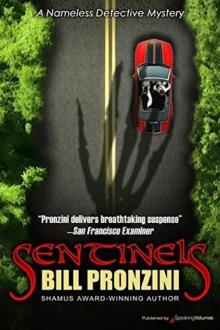 Sentinels
Sentinels The Peaceful Valley Crime Wave
The Peaceful Valley Crime Wave Hardcase
Hardcase Bleeders
Bleeders Demons
Demons The Pillars of Salt Affair
The Pillars of Salt Affair Epitaphs
Epitaphs Spook
Spook Hoodwink
Hoodwink Bug-Eyed Monsters
Bug-Eyed Monsters Endgame--A Nameless Detective Novel
Endgame--A Nameless Detective Novel The Hidden
The Hidden The Paradise Affair
The Paradise Affair Oddments
Oddments Boobytrap
Boobytrap Blue Lonesome
Blue Lonesome Scenarios - A Collection of Nameless Detective Stories
Scenarios - A Collection of Nameless Detective Stories Breakdown
Breakdown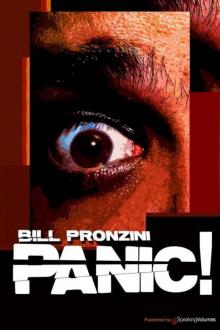 Panic!
Panic! The Bags of Tricks Affair
The Bags of Tricks Affair Quicksilver (Nameless Detective)
Quicksilver (Nameless Detective) Hellbox (Nameless Detective)
Hellbox (Nameless Detective) Nightcrawlers nd-30
Nightcrawlers nd-30 Zigzag
Zigzag The Jade Figurine
The Jade Figurine The Stolen Gold Affair
The Stolen Gold Affair The Stalker
The Stalker The Lighthouse
The Lighthouse Fever nd-33
Fever nd-33 Nightshades (Nameless Detective)
Nightshades (Nameless Detective) Scattershot nd-8
Scattershot nd-8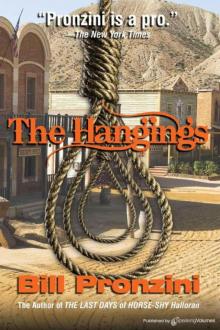 The Hangings
The Hangings Mourners: A Nameless Detective Novel (Nameless Detective Mystery)
Mourners: A Nameless Detective Novel (Nameless Detective Mystery) Graveyard Plots
Graveyard Plots Pumpkin
Pumpkin Schemers nd-34
Schemers nd-34 The Bughouse Affair q-2
The Bughouse Affair q-2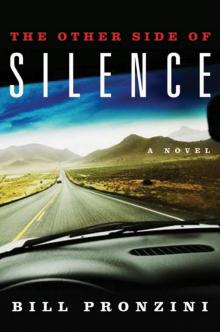 The Other Side of Silence
The Other Side of Silence Savages: A Nameless Detective Novel (Nameless Detective Novels)
Savages: A Nameless Detective Novel (Nameless Detective Novels) Crazybone
Crazybone Schemers: A Nameless Detective Novel (Nameless Detective Novels)
Schemers: A Nameless Detective Novel (Nameless Detective Novels) Gun in Cheek
Gun in Cheek In an Evil Time
In an Evil Time Son of Gun in Cheek
Son of Gun in Cheek Camouflage (Nameless Detective Mysteries)
Camouflage (Nameless Detective Mysteries)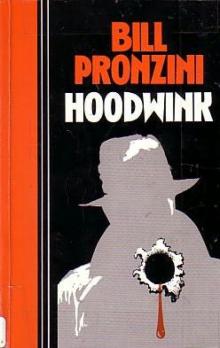 Hoodwink nd-7
Hoodwink nd-7 With an Extreme Burning
With an Extreme Burning Vixen
Vixen More Oddments
More Oddments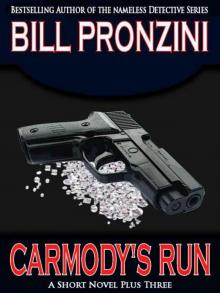 Carmody's Run
Carmody's Run Small Felonies - Fifty Mystery Short Stories
Small Felonies - Fifty Mystery Short Stories Labyrinth (The Nameless Detective)
Labyrinth (The Nameless Detective) Jackpot (Nameless Dectective)
Jackpot (Nameless Dectective) Case File - a Collection of Nameless Detective Stories
Case File - a Collection of Nameless Detective Stories Undercurrent nd-3
Undercurrent nd-3 Betrayers (Nameless Detective Novels)
Betrayers (Nameless Detective Novels) Deadfall (Nameless Detective)
Deadfall (Nameless Detective) Bones nd-14
Bones nd-14 The Snatch nd-1
The Snatch nd-1 Bindlestiff nd-10
Bindlestiff nd-10 Blowback nd-4
Blowback nd-4 A Wasteland of Strangers
A Wasteland of Strangers Double
Double The Bags of Tricks Affair--A Carpenter and Quincannon Mystery
The Bags of Tricks Affair--A Carpenter and Quincannon Mystery Quarry
Quarry Nameless 08 Scattershot
Nameless 08 Scattershot Mourners nd-31
Mourners nd-31 The Vanished
The Vanished Savages nd-32
Savages nd-32 Quincannon jq-1
Quincannon jq-1 Hellbox nd-37
Hellbox nd-37 The Crimes of Jordan Wise
The Crimes of Jordan Wise Bones (The Nameless Detecive)
Bones (The Nameless Detecive) Nothing but the Night
Nothing but the Night Camouflage nd-36
Camouflage nd-36 Pumpkin 1doh-9
Pumpkin 1doh-9 Blowback (The Nameless Detective)
Blowback (The Nameless Detective) Give-A-Damn Jones: A Novel of the West
Give-A-Damn Jones: A Novel of the West Shackles
Shackles The Violated
The Violated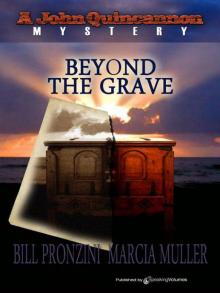 Beyond the Grave jq-2
Beyond the Grave jq-2![The Vanished - [Nameless Detective 02] Read online](http://i1.bookreadfree.com/i2/04/10/the_vanished_-_nameless_detective_02_preview.jpg) The Vanished - [Nameless Detective 02]
The Vanished - [Nameless Detective 02] Quincannon
Quincannon Undercurrent (The Nameless Detective)
Undercurrent (The Nameless Detective) Step to the Graveyard Easy
Step to the Graveyard Easy Nightcrawlers: A Nameless Detective Novel (Nameless Detective Mystery)
Nightcrawlers: A Nameless Detective Novel (Nameless Detective Mystery) The Eye: A Novel of Suspense
The Eye: A Novel of Suspense Betrayers nd-35
Betrayers nd-35 Quicksilver nd-11
Quicksilver nd-11 Acts of Mercy
Acts of Mercy Breakdown nd-18
Breakdown nd-18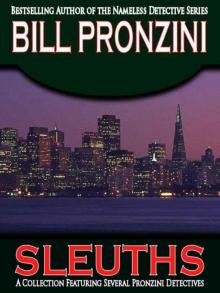 Sleuths
Sleuths![The Snatch - [Nameless Detective 01] Read online](http://i1.bookreadfree.com/i2/04/07/the_snatch_-_nameless_detective_01_preview.jpg) The Snatch - [Nameless Detective 01]
The Snatch - [Nameless Detective 01] Scenarios nd-29
Scenarios nd-29 Nightshades nd-12
Nightshades nd-12 Snowbound
Snowbound Deadfall nd-15
Deadfall nd-15 Bindlestiff (The Nameless Detective)
Bindlestiff (The Nameless Detective) Fever: A Nameless Detective Novel (Nameless Detective Novels)
Fever: A Nameless Detective Novel (Nameless Detective Novels)